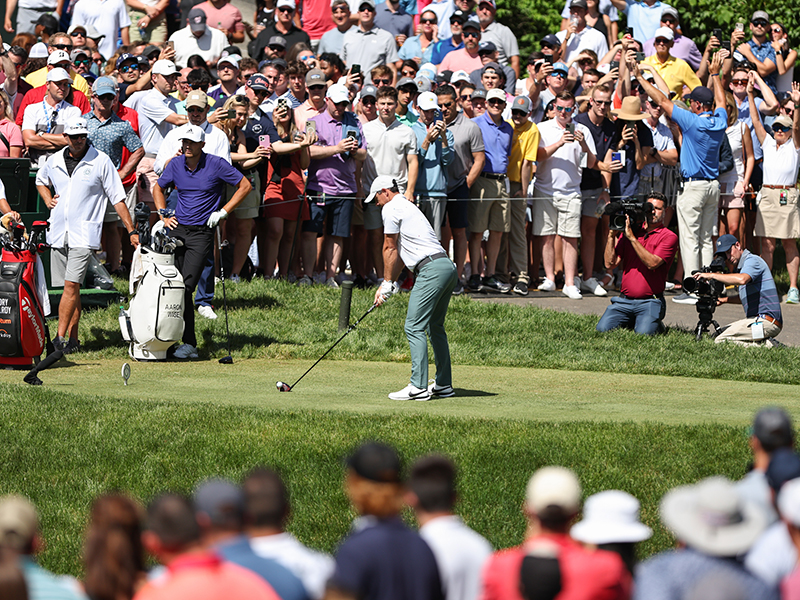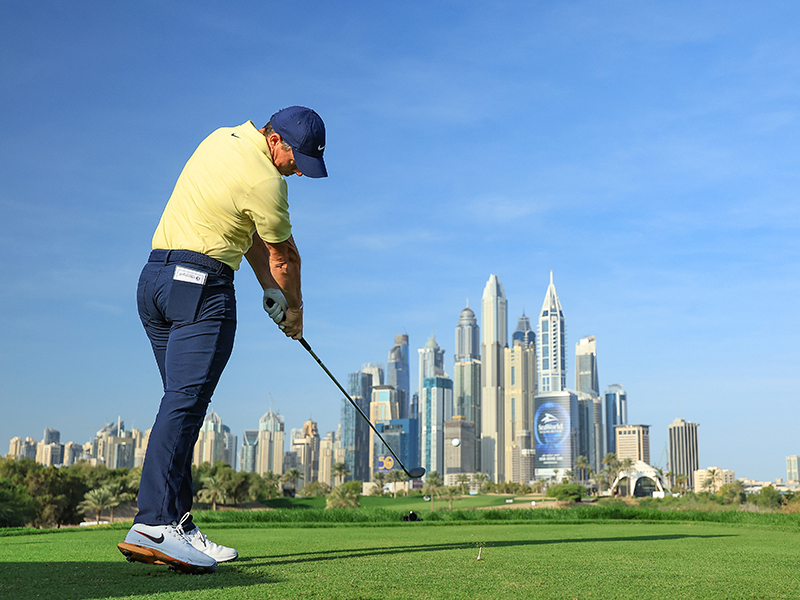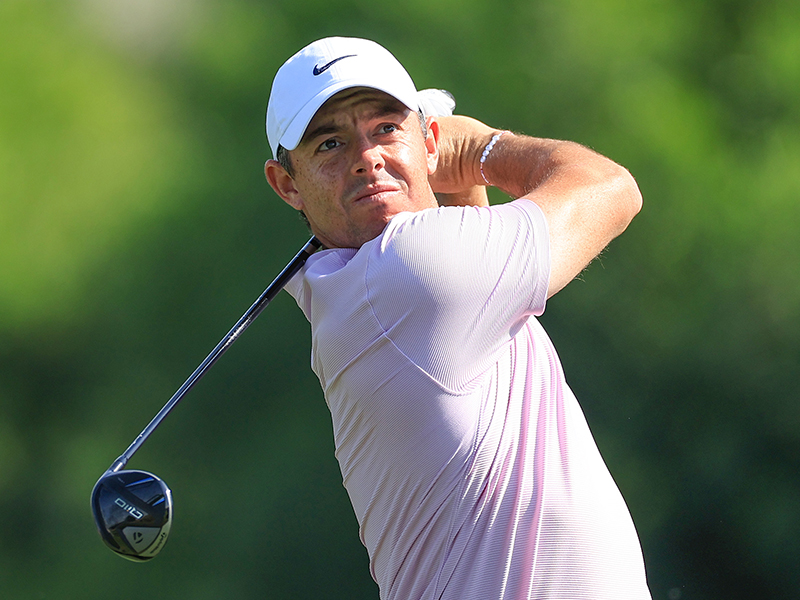
Rory McIlroy is often the first name that comes to mind when you think about the greatest drivers of the golf ball, and he once again utilised that area of his game when winning a fourth Dubai Desert Classic title. The Northern Irishman ranked 1st out of 126 players for strokes gained off-the-tee and driving distance at Emirates GC.
With the pedigree McIlroy possesses as one of the best drivers the game has ever seen, we outline some of the best power tips that Rory has shared with us over the years...
1) Activate Your Address Position

Bend forward from your hips, without slouching or creating a ‘hump’ in your back. It should feel as though your back is flat, from the top of your rear end to the middle of your neck. Don’t to over-arch and create a reverse curve at the bottom of your spine. That will limit your ability to turn.
To create a wide base, I spread my feet slightly wider than shoulder width, which is a little wider than most guys. It gives me extra stability, especially when I really go after one. If you’re a fast swinger like me, err on the side of spreading your feet too far apart, rather than setting them too close together.
I like to flex my knees, then tilt my upper body toward the ball about 30 degrees. This places me in a strong, activated position; I’m set but ready to move in any direction.
2) The First Two Feet Of The Swing Are Critical

As you push the club back, let this action pull your left shoulder away from the target. This stops you from swinging the club too far to the outside.
Keep your lower body still at the start. Overactive hips in your takeaway tend to whip the club inside the ideal plane, forcing you to change direction coming down. That makes it tough to achieve solid contact.
I address the ball with my left hand just in front of my toes, so if I do nothing but push the club straight back, it will still be slightly in front of my toes at the end of my takeaway. You know you’ve pushed back correctly if the shaft points in the direction of your toe line and lies flat just before you start folding your right elbow.
3) 'Turn And Load' At The Top

Most skilled golfers keep their left arm straight and fold the right. For me, a straight left arm stops me from over-rotating. I don’t buy the theory of keeping the lower body still during the entire backswing, because you can’t make a full, 90-degree shoulder turn without rotating your hips.
The trick is to turn your lower body, while maintaining the flex in your right knee. Do it right and you’ll actually feel your weight ‘load’ into your right side. As soon as you feel your left shoulder swing under your chin, stop. That’s the end of your backswing. I also use this point as a trigger to start my downswing. Once my left shoulder is under my chin, I pause, then unwind.
4) Strength Creates Power

I didn’t start training because I wanted to hit the ball further. But the reality is that if you’re stronger and have more muscle weight then there will be more mass behind the ball and you’re likely to create more power through impact. Golf is a sport where you have to make a really powerful, athletic swing.
Then, you walk slowly to your ball and make the same athletic movement again, and so on. So endurance training is part of what I do, and I do plenty of cardio work just for my general health. The main focus, though, is on training my body to be able to control my speed through impact.
I’ve always been able to hit the ball a good distance because of my rotational speed. But when we started looking at how my body was working, it was clear that I would collapse into my left side through impact. This was because I didn’t have enough strength and stability in my left leg to hold on to that power all the way through the ball. So there was a lot of lower-body training to do at the start. Mostly on my left side, to give me more control.
5) Understand Rhythm

Rhythm is very important, it was drilled into me from a very early age. One of the things I often see is that, especially with the driver, people swing really fast from the start. They whip the club back quickly and that’s when you lose your timing. You have to keep it nice and smooth from the start, concentrating on having a build-up of pace and a wind-up in your turn. If you have a smooth build-up, you aren’t really hitting it hard until halfway through the downswing – that’s what you’re looking for.
That’s the point at which you can let it go. So it’s as if you were counting “1,2,3” – “one” and “two” being to the top of the backswing, and then “three” through the hitting area. I would always think about rhythm with the driver being about a smooth wind-up, but I’d never say slow, it’s always smooth. Then you want that nice transition from backswing to downswing and then you can let it go.







